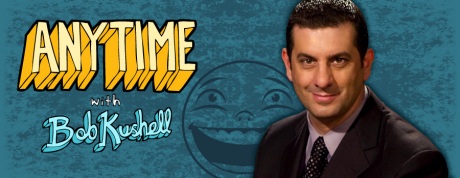TV: Online Television, Web Series Primer – Introduction May 6, 2009
Posted by Aymar Jean Christian in Uncategorized.Tags: online video, TV, web series, youtube
trackback
UPDATE!: I’ve updated the following post in a clearer format with better information on how the market works. Please see this post: “What is a Web Series?”
ORIGINAL: I wrote this primer on made-for-online TV serials for a seminar here at the Annenberg School for Communication at the University of Pennsylvania to orient myself to what the most current debates are and to start planning for research in this area (I’m just starting to learn). I’m posting it here in sections to get feedback, comments and information from anyone who’ll offer it. So please leave comments or email me (ajean @ asc . upenn . edu) if you can help out!
INTRODUCTION: A GENRE IN DEVELOPMENT

Bitsie Tulloch in "Quarterlife"
From Newsweek.com’s The District to IFC.com’s Young American Bodies, the range and number of web serials is staggering. In some ways, to speak of web serials – web series, or, metaphorically speaking, online TV shows – is fraught with complications. What are the similarities, for instance, between the low-budget, DIY aesthetic of Young American Bodies – formerly on Nerve.com – compared with the slate of sci-fi action series NBC created for its hit show Heroes – Nowhere Man, Going Postal, and Heroes Destiny? Wikipedia’s list of web series contains dozens of shows, and even that list is incomplete. There is no formula for web serials. They range from science fiction (a large proportion), to non-narrative periodical short films (Green Porno, SundanceChannel.com), to vignettes (Rockville, CA for TheWB.com), to promotional extras for established network shows (Chasing Dorota for the CW; Mode After Hours for ABC; Kenneth the Web Page for NBC), among numerous other unclassifiable installations on independent websites, major distributors like YouTube, Facebook or FunnyorDie.com, and network web sites. Web serials are becoming established and developing an infrastructure – they have an annual award, the Streamys, judged by a panel of industry leaders and participants. Yet with all of this activity, the mass media industries – advertisers, content producers, major distributors (networks) – have yet to master the medium and make it systematically profitable. The two major shows in web series history – lonelygirl15 and Quarterlife – both ending in 2008 and both often referenced in articles about online TV – have provided little guidance on do’s and don’ts, raising more questions for industry professionals than answers. In general, online television represents a genre of media still in development, and the debates around its possibilities and shortcomings indicate the challenges facing mass media industries today.
PRODUCTION STRATEGIES
The confusion around web serials mostly results from timing, or rather, the fact that the medium is still in its growing stages. Business and production practices are still being fleshed out advertisers, content producers and distributors looking for ways to operationalize the form. Most agree that production costs need to be kept as low as possible, since there is no guarantee of reaching an audience on the web. The definition of “low” is relative, however. Sometimes, series producers will pay extra for stars – as some have suggested for Gemini Division, a show developed for NBC featuring Rosario Dawson (Hale 2008) – and yet other stars take a pay cut in order to experiment with something new. Megan Mullally did not get paid for doing TheWB.coms’s Children’s Hospital, and many of the stars who appear in FunnyorDie.com videos are not paid either, while TheWB.com’s show Rockville, CA uses union actors who are paid. “The one commonality is that all Web series cost a fraction of prime-time TV series, which run more than $1 million per episode for half-hour programs and more than $2.5 million per episode for dramas.” (Owen 2009)

"Anytime with Bob Kushell"
A popular talk show on Crackle.com, Anytime with Bob Kushell, produces 22 episodes in “the mid-six figure range.” (Owen 2009) Another reason to keep costs low is advertisers do not pay top-dollar for ads on web shows – the relationship changes when the advertisers help produce – because the audiences can be a small, the cost-per-thousand rate does not make it much cheaper. For marketers, “the overall investment here is small, but so are the audiences. It’s a niche strategy that could work for some brands.” (Learmonth 2009) Even if a show does attract an audience, the industry lacks a systematized way to decide what constitutes a hit. Unlike Nielsen, which provides ratings based on the number of TV households and the number of people watching at a given time, such a refined system is unavailable – and may be incompatible – in an online environment. New York Times reporter Virginia Heffernan noted that, on a “view-per-episode” basis, Quarterlife was more successful than lonelygirl15, even though the latter lasted longer. Yet she was quick to note that the “unit of success is the flimsy ‘view,’ meaning virtually any click on any part of a series, anywhere on the Web. But it’s clear that we’re not talking about numbers advertisers can remotely trust. Are there really any hit Web serials?” (Heffernan 2008) Especially in a digital environment where everything is purportedly quantifiable, advertisers want proof of engagement, some would argue “views,” and even “subscribers,” as is the case with YouTubers like “Fred,” are not enough.[1] A lack of standard metrics means more creative freedom in some cases. Josh Schwartz (The O.C.; Gossip Girl) said of his web series, Rockville, CA:
“I don’t quite know the metrics of the success, which is also part of what appeals to me. So much of what takes the fun out of doing a TV show is the ratings. The thing that was incredible about this was the freedom. There were no notes on scripts. I was able to cast whoever I wanted to cast for the show, and that was really freeing.” (Chaney 2009)
Yet clearly this kind of freedom will not last forever; once ratings are in place, shows start to get crafted to target audiences.

The success of "Lonelygirl15," relative to "Quarterlife," led Virginia Heffernan to question what a "hit" is online.
This ambiguity over the metrics of success has problems – notably, in getting the money to create the series – and also leads to interesting conversations about the ontology of what quantifies a “hit” and, indeed, what serials should look like and how they should be structured. Heffernan, saying she preferred the loose, unpredictable, less clearly narrative lonelygirl15, exhibited at first without metrics in mind, to the more rigidly serialized Quarterlife, said that perhaps the idea of a “web serial” and a “hit” are incompatible; perhaps the only video hits will be Susan Boyle and other “viral,” more organic popular videos:[2] “Web serials smack of planning and budgets and all that vestigial Hollywood stuff.” (Heffernan 2008) When distribution is predicated on advertising, budgeting and ratings are key, and web series simply have yet to reach that form of maturity. Of course, all of these issues become less important when web series are seen as testing grounds for launching shows into television; yet the viability of that model is in question, given the mediocre performance of In the Motherhood[3] on ABC and the dismal performance of Quarterlife when it aired on NBC.
[1] Though “Fred” has attracted product placements and advertisers, from Zipit and the film City of Ember. Juntras, Lisan. 2008. What could be more fun than watching a teen act like a shrieking six-year-old?. September 15. The Globe and Mail, L4, and Sanders, Peter. 2008. Studios Hope YouTube Tie Sells Movie. September 18. Wall Street Journal. (It did not work for City of Ember).
[2] Part of this is a discussion involves whether serials should remain amateur – “anyone who has a camcorder and a bright idea can produce a show” – or go professional. (Dobuzinskis 2009)
[3] The network’s lowest-rated show in the 18-49 demographic for the spring season. Gorman, Bill. 2009. Surviving Suburbia, Samantha Who? And Castle Sit On ABC’s Bubble?. April 28. TVByTheNumbers.com. http://tvbythenumbers.com/2009/04/28/surviving-suburbia-samantha-who-and-castle-sit-on-abcs-bubble/17566

[…] TV: Online TV/Web Serials Primer – Introduction « Aymar Jean … […]
[…] TV: Online TV/Web Serials Primer – Introduction « Aymar Jean … […]
[…] TV: Online TV/Web Serials Primer – Introduction « Aymar Jean … […]
[…] TV: Online Television, Web Series Primer – Introduction … […]
[…] is the original post: TV: Online Television, Web Series Primer – Introduction … Leave a comment | Trackback No comments […]
[…] TV: Online Television, Web Series Primer – Introduction … […]
This Tv web site http://www.channels-tv.com/ is good one for watching tv channels ;)
[…] academics and maybe aspiring producers, this might be useful. I’ve had a bunch of hits on my old primer, but it’s rough at best. I’m also publishing this so anyone who might be doing […]
There is obviously a lot to know about this. There are some good points here.